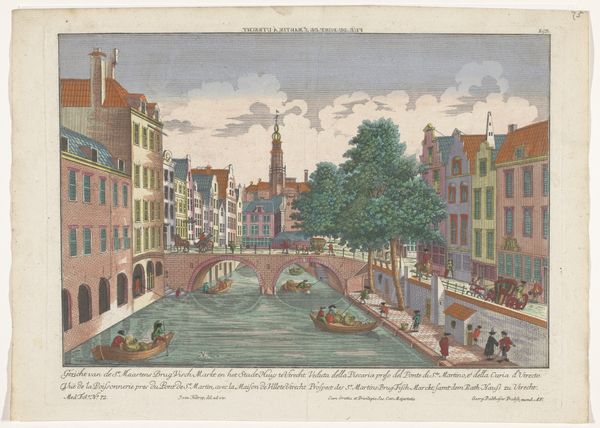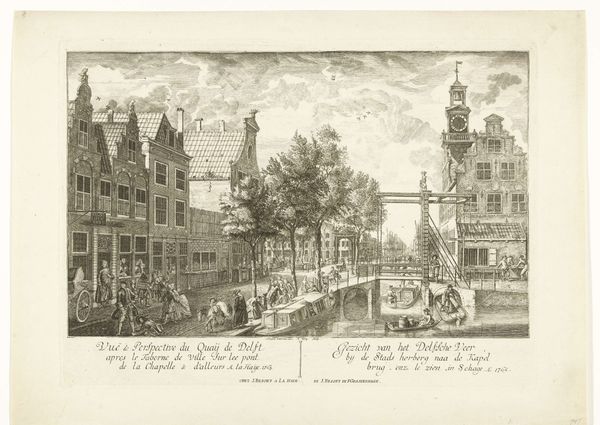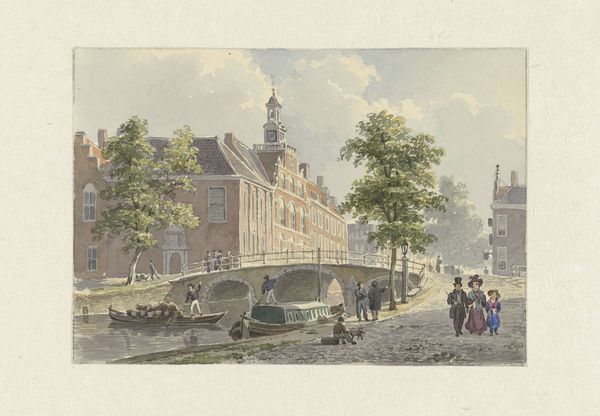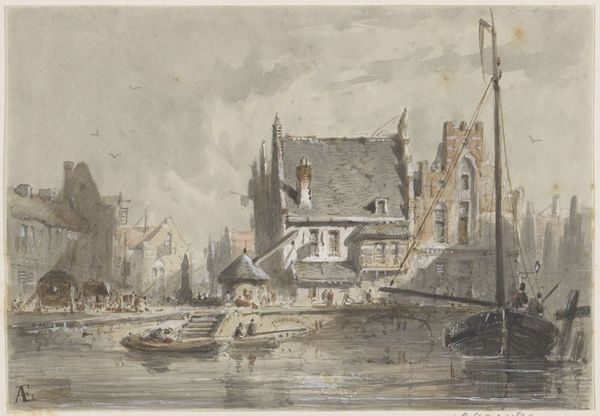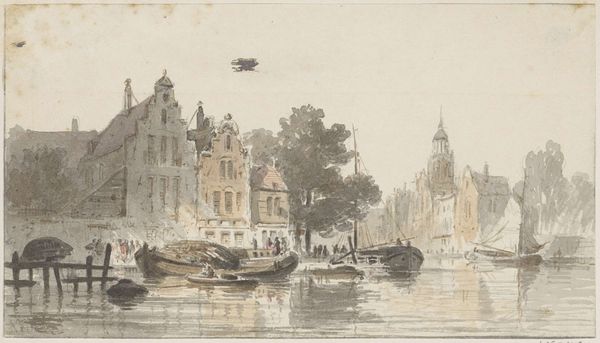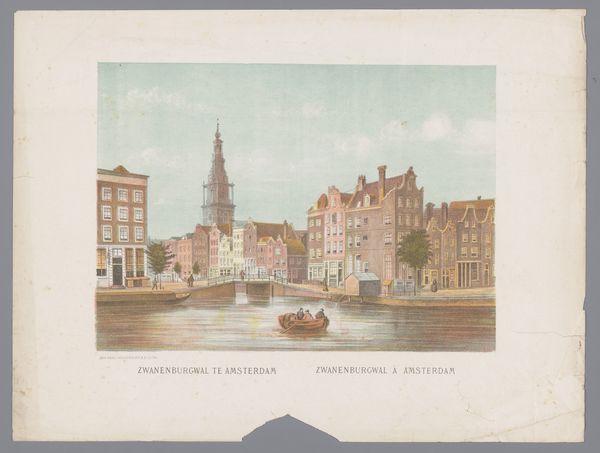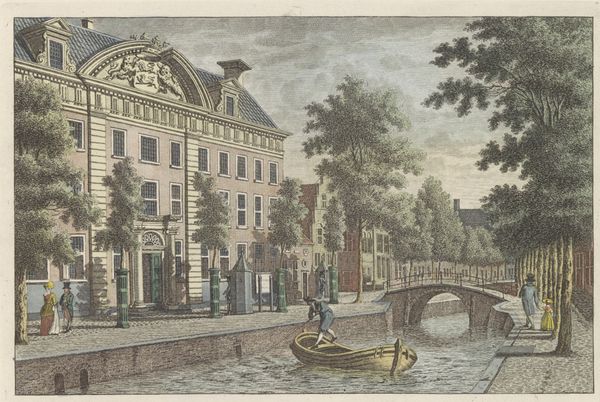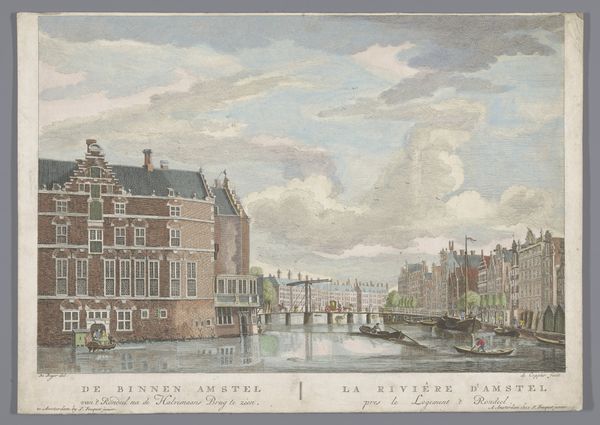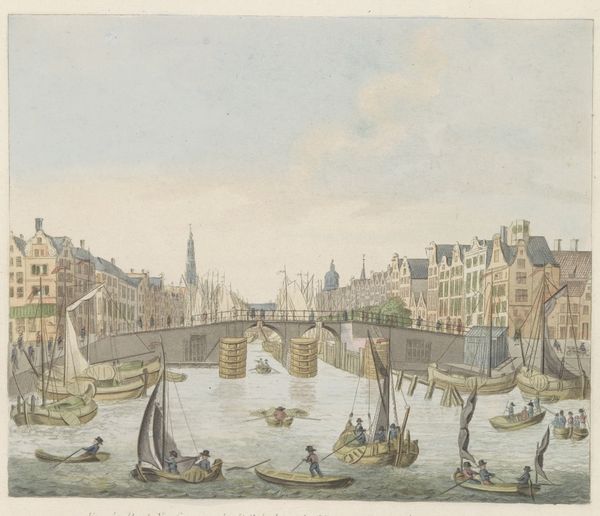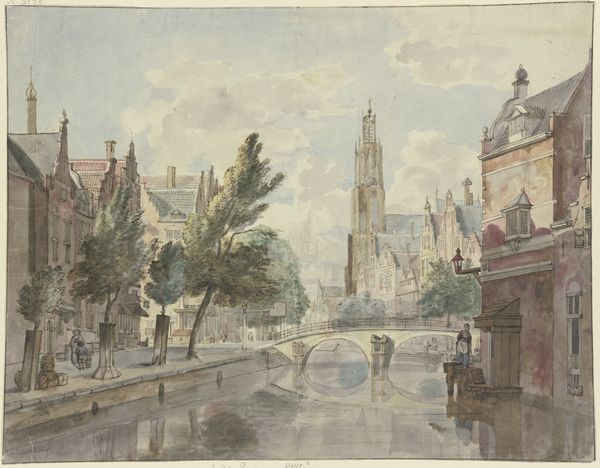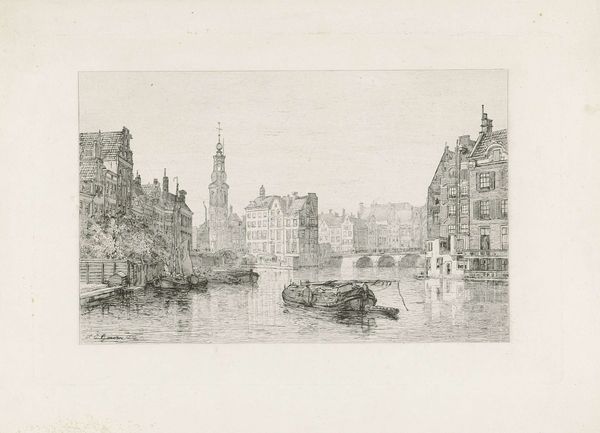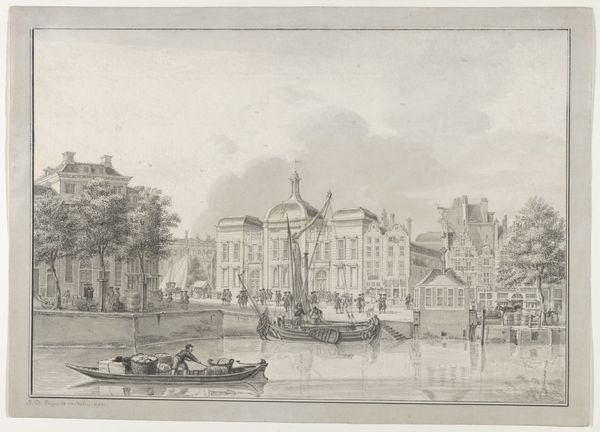
drawing, plein-air, watercolor
#
architectural sketch
#
landscape illustration sketch
#
drawing
#
building study
#
dutch-golden-age
#
plein-air
#
landscape
#
architecture mock-up
#
watercolor
#
site analysis
#
architectural drawing
#
architecture drawing
#
cityscape
#
genre-painting
Dimensions: height 372 mm, width 468 mm
Copyright: Rijks Museum: Open Domain
Curator: This is a watercolor drawing by Jan Hendrik Verheijen, titled "Gracht in een stad met een torentje bij een stenen brug"—Canal in a city with a small tower near a stone bridge. Its creation is dated sometime between 1788 and 1846. Editor: It feels… placid. The cool, muted colors evoke a sense of quiet industriousness. Even the tower, usually a symbol of power, seems softened by the light and gentle application of paint. Curator: Precisely! Verheijen’s piece embodies a Romantic fascination with the Dutch Golden Age, not just stylistically, but also in its portrayal of civic life. There’s an inherent idealized perspective at play. Editor: I notice the prominent tower features heavily in the composition. Does that architectural choice mean something beyond just its structure? Its design and placement, especially with the waterway, feels very deliberate. Curator: It is! Waterways in Dutch art, especially during this period, often represent trade, prosperity, and connectivity. Towers like this sometimes functioned as weigh houses. Their presence in art elevated the importance of local civic functions. Editor: Ah, like an early form of branding! The symbols work together to convey a specific message about this city's identity, wealth, and perhaps a sense of order. Curator: Absolutely, while the overall painting is not propagandistic in nature, it still manages to imbue a sense of patriotic pride. Editor: The tiny figures add such a human touch to the grand scheme. Each seems to have a role in this thriving community, quietly but vitally contributing. You can even see men fishing from their small boats. Curator: Yes, Verheijen successfully merges topographical precision with a lively genre scene. The seemingly mundane is, in fact, filled with symbolism. It acts almost like a time capsule, conveying visual language that was readily readable for audiences of its era. Editor: Looking closely, one can really appreciate the skill involved in creating such a detailed image using watercolors. There are nuances within a pale pallete that elevate what at first glance might seem simplistic. Curator: Indeed, it is the subtleties, those details, which make it such an intriguing piece of art history. Verheijen, consciously or unconsciously, gives the ordinary iconic status. Editor: Well, that was unexpectedly enriching. I think I’ll seek out more of Verheijen's work—I am fascinated to know more about these visual messages from history.
Comments
No comments
Be the first to comment and join the conversation on the ultimate creative platform.
